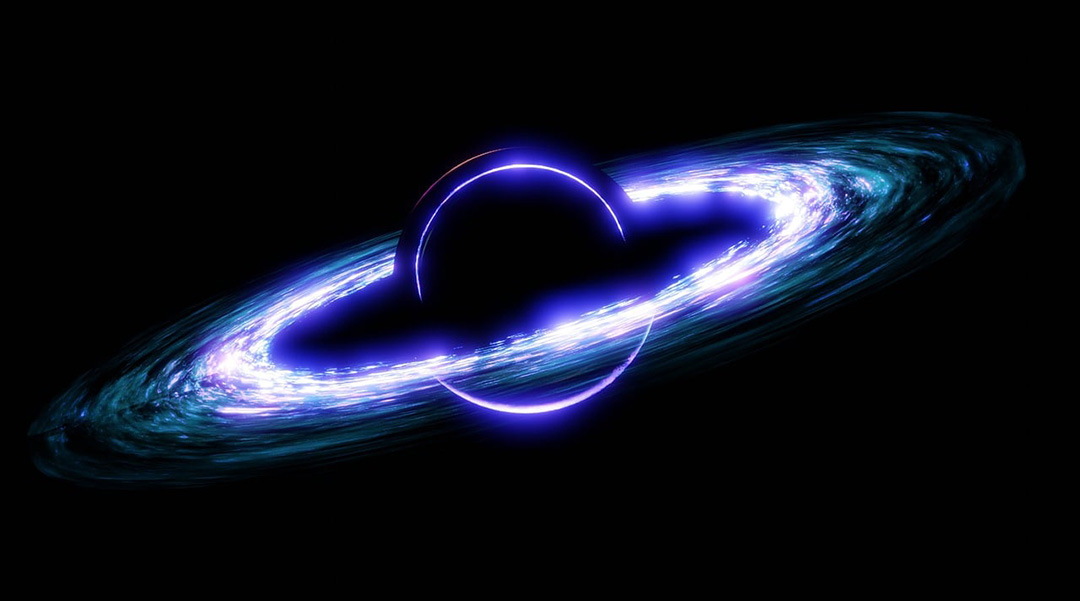Supermassive black holes are often perceived as cosmic engines of destruction, consuming everything that ventures too close. However, they can also take part in shaping the structure of the galaxies they reside in.
To gain a better understanding of this phenomenon, in a recent study physicists have measured the impact of radiation from material falling into a black hole on interstellar matter, discovering that black holes trigger the formation of galactic winds that significantly influence star formation.
Astrophysicists believe that most galaxies harbor supermassive black holes at their centers. These black holes continuously absorb surrounding matter, growing to millions or even billions of times the mass of our Sun.
Before being consumed, this matter forms accretion disks around their black holes. The intense radiation from these disks makes the centers of galaxies that host supermassive black holes some of the brightest objects in the universe — formally known as quasars.
“The material in that disk is always falling into the black hole, and the friction of that pulling and pulling heats up the disk and makes it very, very hot and very, very bright,” Catherine Grier, a professor of astronomy at the University of Wisconsin-Madison and one of the lead authors of the study, said in a press release. “These quasars are really luminous, and because there’s a large range of temperatures from the interior to the far parts of the disk, their emission covers almost all of the electromagnetic spectrum.”
The enormous brightness of quasars makes them fascinating objects to study, as they can be observed from vast distances. Due to the time it takes for their light to reach Earth, astronomers can observe quasars as they were in the early Universe, during the active formation of the first galaxies and stars.
Grier and her colleagues examined observations of the bright quasar SBS 1408+544 collected by the Sloan Digital Sky Survey and found that the properties of its radiation indicate the existence of the winds it creates.
Black holes and galactic winds
Interstellar gas particles that permeate the galaxy experience pressure from the light emitted by the accretion disk that pushes them away. Crucially, they can also absorb some of this light, preventing it from reaching our instruments on Earth. The frequency of light absorbed by particles depends on their velocity, so by observing dips in the light spectrum of a quasar, scientists can study changes in this galactic wind’s speed.
“That shift tells us the gas is moving fast, and faster all the time,” says Robert Wheatley, a recent graduate and another lead author of the study. “The wind is accelerating because it’s being pushed by radiation that is blasted off of the accretion disk.”
Earlier observations had indicated that SBS 1408+544 produced black hole winds, along with a dozen similar cases in other quasars. However, it was the data from 132 observations of SBS 1408+544, collected over nearly nine years that allowed the researchers to confirm this phenomenon.
The study revealed that the gas velocity reached nearly 20,000 kilometers per second, increasing by almost 700 kilometers per second over the observation period — a significant change in astrophysics, where typical time scales span millions or even billions of years.
The impact of galactic winds on star formation
The presence of these winds will also have profound implications on our understanding of star formation. Galactic winds can both enhance star formation by supplying new material and hinder it by blowing material away from nascent stars.
“If they’re energetic enough, the winds may travel all the way out into the host galaxy, where they could have a significant impact,” Wheatley says.
However, to accurately determine this influence, researchers need more data. Observing just one quasar, albeit one with strong winds, is not enough.
Fortunately, the Sloan Digital Sky Survey is currently observing around 200 quasars simultaneously. The researchers expect to detect powerful winds in many of them, which should help them understand both the generation of these winds by black holes and their influence on the formation of galactic structures.
“Supermassive black holes are big, but they’re really tiny compared to their galaxies,” concluded Grier. “That doesn’t mean they can’t ‘talk’ to each other, and this is a way for one to talk to the other that we will have to account for when we model the effects of these kinds of black holes.”
Reference: Robert Wheatley et al, The SDSS-V Black Hole Mapper Reverberation Mapping Project: C iv Broad Absorption Line Acceleration in the Quasar SBS 1408+544, The Astrophysical Journal (2024). DOI: 10.3847/1538-4357/ad429e
Feature image credit: AdisResic on Pixabay

















